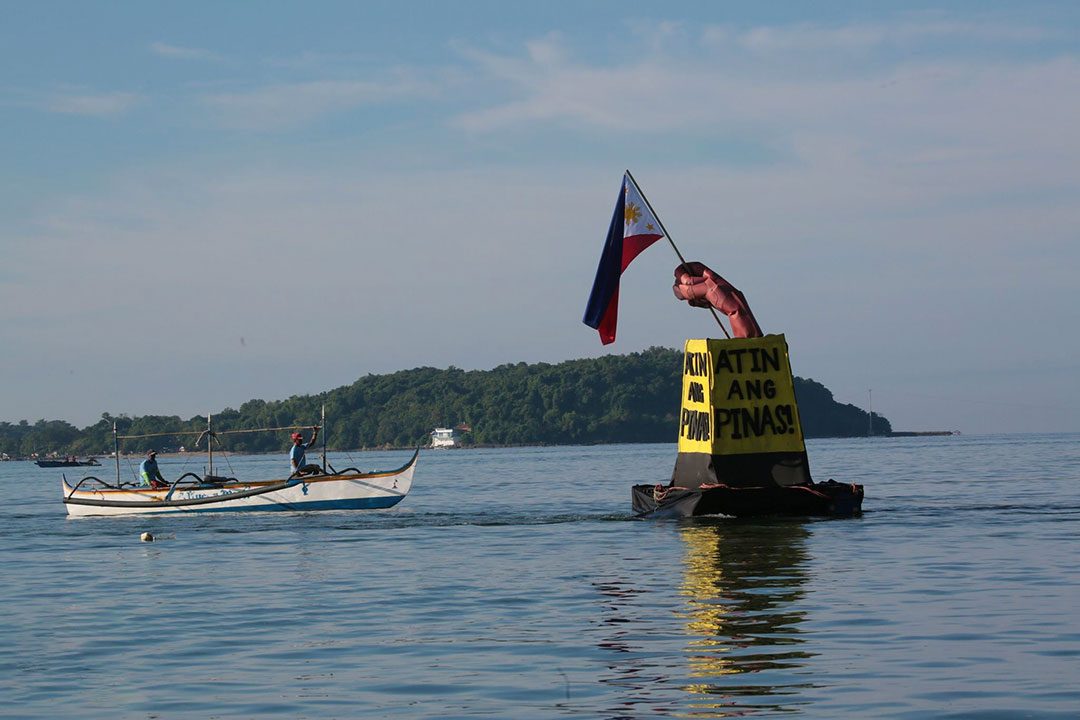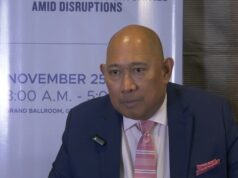Philippine civilians to hold concert in South China Sea

By Kenneth Christiane L. Basilio, Reporter
A COALITION of Philippine activists on Monday said it had organized a civilian convoy that will head to contested areas of the South China Sea in late May to deliver supplies to Philippine vessels and perform a “sea concert.”
The Atin Ito (This is Ours) coalition said it is still finalizing the details of the voyage, but it is planning to start the trip to the Spratly Islands on May 25.
The mission will last three days, Rafaela David, president of party-list group Akbayan and co-convener of the coalition, told a news briefing.
The groups would deliver supplies to Filipino fishermen and troops and hold a concert to assert Philippine sovereignty over certain features of the disputed waterway, she added.
“We’ll just announce our final itinerary and route as we move forward,” she said in Filipino. “But what’s clear to us is that it will remain at the heart of the Kalayaan Island Group,” she added, referring to the Filipino name for the Spratlys.
“So in that area, we’re setting up the prospecting site where we’ll have jamming sessions and a concert,” she added.
The Philippines and China have been at loggerheads over disputed features in the South China Sea, which Beijing claims almost in its entirety. A 2016 ruling by a United Nations-backed court ruled that its claims are illegal.
Ms. David said they decided to hold a sea concert as a “creative form” of protest against China’s encroachment of Philippine waters.
The Chinese Embassy in Manila did not immediately reply to a Viber message seeking comment.
“Music is a potent form in showing solidarity and in letting China hear that the voices of Filipinos are united,” she said.
The group is inviting artists from other Southeast Asian nations to participate in the sea concert, which they plan to broadcast on social media, Ms. David said. “We are targeting artists from other claimant states.”
The sea, parts of which are also claimed by Brunei, Indonesia, Malaysia and Vietnam, is a vital waterway for more than $3 trillion of annual ship-borne commerce.
The coalition will be in “constant communication” with Philippine authorities to ensure the safety of volunteers and participating artists during their sail, Ms. David said. They did not seek approval from the Philippine government for their planned voyage, she added.
“We’re able to prepare for different scenarios, making sure that our convoy will be safe and secure.”
Atin Ito coalition’s civilian flotilla last year delivered food and fuel to Filipino fishermen in the South China Sea but failed to sail closer to Scarborough Shoal, a rocky atoll and prime fishing patch inside the Philippines’ exclusive economic zone (EEZ), due to the presence of Chinese ships there.
The civilian mission to the South China Sea will likely elicit a reaction from Beijing, said Rommel Jude G. Ong, a retired rear admiral and praxis professor at the Ateneo de Manila University’s School of Government.
“Whatever we do in the West Philippine Sea, whether it’s this civilian mission or the usual government activities, will always trigger a reaction,” he told BusinessWorld in an interview in Filipino, referring to regions of the sea within Manila’s 200-nautical mile exclusive economic zone.
“Even if we don’t do anything, their harassment continues. So all the more we need to speak up,” Ms. David said.
Manila has accused China’s coast guard of aggression at sea, while Beijing is furious over what it calls repeated provocations and territorial incursions by its neighbor’s coast guard.
The Philippine government should modernize its naval and coast guard assets to counter China’s encroachment of its EEZ, Mr. Ong said.
“They should restore the budget for the modernization of our forces… The coast guard also needs to be modernized. Unfortunately, this is a numbers game when it comes to ships,” he added.
The Philippines, while unable to match China’s maritime presence in the South China Sea, should demonstrate its commitment by maintaining visible presence and ensuring its maritime features are not abandoned, Mr. Ong said.
“We need to be conscious that even if we can’t match them, at the very least, we must not abandon the area,” he said. “As long as there is one vessel in that area representing the Philippines, that is already sufficient.”
The Philippine’s Environment department last week said it would conduct biodiversity research at Reed Bank and Commodore Reef in the South China Sea.
The agency would also set up a marine scientific research station at Pag-asa Island as part of the eight stations across the country’s biogeographic regions, Environment Secretary Maria Antonia Yulo-Loyzaga told a security forum.



